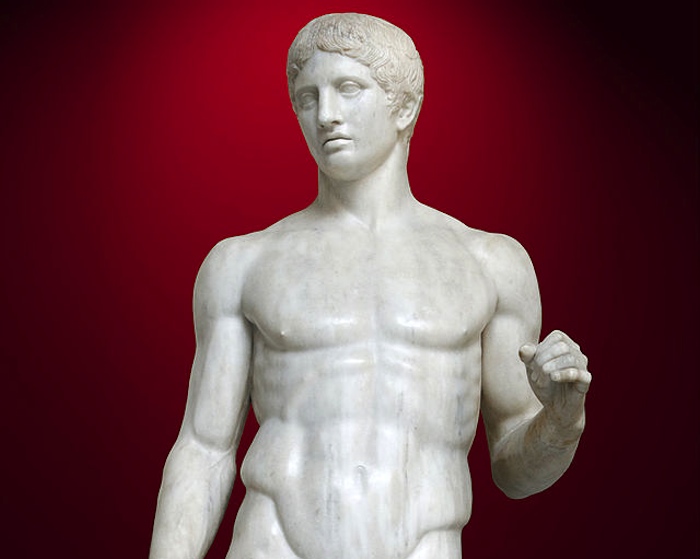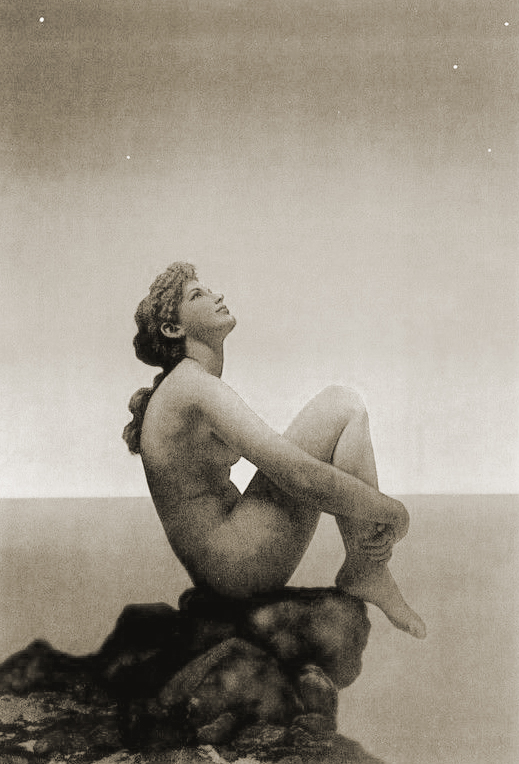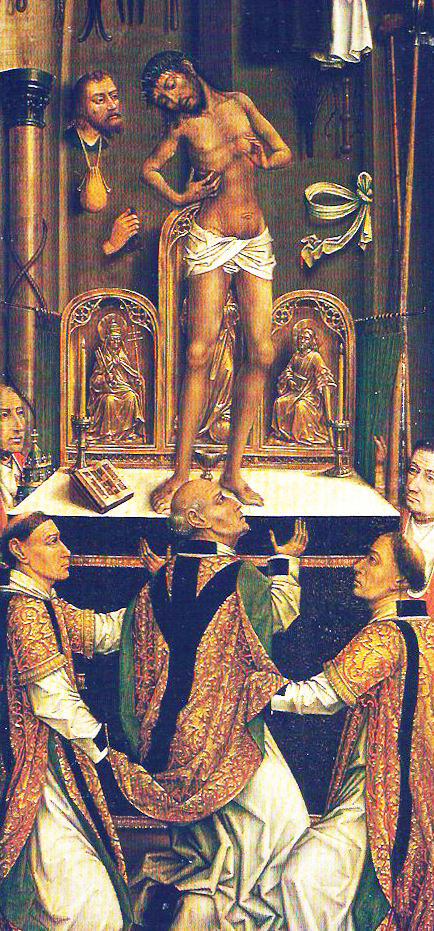Detail of Perdita by Anthony Frederick Sandys, circa 1866
Category: Aryan beauty
Merrie Melodies
 If we remember a passage in The Fair Race (‘The Arab historian Ibn Fadlan, ambassador of Baghdad to the Bulgarians of the Volga, says of the Vikings: “I have never seen physical specimens so perfect, tall as palm trees, blond and ruddy-skinned”’) it is obvious that the other human races should not exist. If they exist for billions it is due to the counterproductive greed of the white man, so well portrayed in The Man Who Would Be King, where the inhabitants of Kafiristan seem apes compared to Sean Connery and Michael Caine. Both white greed and Christian ethics are behind the creation of the billions of non-whites currently flooding the globe.
If we remember a passage in The Fair Race (‘The Arab historian Ibn Fadlan, ambassador of Baghdad to the Bulgarians of the Volga, says of the Vikings: “I have never seen physical specimens so perfect, tall as palm trees, blond and ruddy-skinned”’) it is obvious that the other human races should not exist. If they exist for billions it is due to the counterproductive greed of the white man, so well portrayed in The Man Who Would Be King, where the inhabitants of Kafiristan seem apes compared to Sean Connery and Michael Caine. Both white greed and Christian ethics are behind the creation of the billions of non-whites currently flooding the globe.
Those who are familiar with Richard Carrier’s work will know that the strongest point of his argument is his analysis of the epistles of St Paul. The oldest texts of the New Testament, the Pauline epistles, do not mention an earthly Jesus but an exclusively heavenly one. St. Paul does not even locate the crucifixion of Jesus on earth! In recent days I have continued reading Carrier’s book and I came across a chapter on Clement of Rome and his epistle, which may have been written in the first century. Surprise: Clement also fails to speak, in so early writing, of an earthly Jesus. Apparently the stories that Mark and the other evangelists would write had not yet reached Clement’s ears.
The evidence that the central character of the New Testament is fictional is overwhelming to anyone who has read Carrier’s book, or seen the YouTube videos where he discusses with theologians who believe Jesus was a historical figure. How was it that, instead of the religion of the beautiful Hellenes, whites submitted to the Semitic religion of eternal fire for whites? (In the representations of old paintings of hell I do not see gooks or blacks but whites.) This reminds me that I took the expression ‘Fruitcake Hospital’, which I used in my previous article, from a program that I saw in the early 1970s in The Porky Pig Show, although I don’t remember which character was sent to the psychiatric hospital (huge buildings in those times, like the one we saw in Joker).
Many whites who have abandoned Christianity maintain in their minds a Christian residue, the belief in the immortality of the human soul. They do not seem to notice that, in doing so, they inadvertently join blacks and gooks as long as ‘Man is special’ and the rest of creation is treated as despicable creatures—as if a camel were the same as a spider! Such is the axiological by-product of those who maintain that only Man possesses a soul that survives death: the ultimate brotherhood with other races. (*)
Some white nationalists argue that the white race has always had a belief in personal immortality. What they fail to realise is that the obsession to save themselves from the eternal fire caused an unhealthy focus with the beyond that didn’t exist in the Ancient World, at least not among whites. The complete apostasy of Christianity not only implies abandoning Christian ethics, the crux of this site, but abandoning the obsession with the hereafter as well. Otherwise whites seem to me like that character from Merrie Melodies I saw as a kid who was sent to the Fruitcake Hospital.
_______
(*) Oliver Sacks’ books are hilarious and also explain how the faculties of the supposed ‘soul’ can be damaged simply by accidentally injuring the human brain.
Physiognomy
The Greeks, and particularly the Spartans, studied ‘physiognomy’ to interpret the character, personality, and ultimately the soul of an individual based on physical features, especially of the face to the point that ugliness in certain Greek states was practically a curse. It was also believed that beauty and a willingness of the features should be an expression of noble qualities necessary for a beautiful body bearer, if only dormant. The creators of the Greek statues made them with that knowledge of the human face and the perfect proportions in mind, and therefore represented not only a beautiful body but also a beautiful body carrying a beautiful soul.
The blind rage with which the Christians destroyed most Greek statues indicates that they greatly feared what they represented, because in them the Hellenes fixed and settled, once and for all, as a goal and template, and ideal: the human type that Christianity would never be able to produce.
(Passages from one of Evropa Soberana’s essays in The Fair Race’s Darkest Hour.)
by Evropa Soberana
Nuremberg Congress of 1934
The world was dying of Judaism and that disease of Judaism that is faith in Jesus; We teach it the violence and faith of the sword. —Jorge Luis Borges, Deutsches Requiem.
The Third Reich
Hitler’s Germany was the culmination of all the processes we have seen, and it was at the 1936 Berlin Olympics where the Germans tried to present themselves as health advocates, announcing their commitment to body culture.
World War II marked a before and after. Before the Third Reich, these issues were talked about without fear. During the Third Reich, they were applied. After the Third Reich, the Pharisees of finance and the media made everything that is eugenic and genetic surrounded by a politically incorrect fog.
In addition to the men cited here, we can mention other prominent scientists who had a prominent role in the elaboration of the Nazi eugenic ideology (known as Rassenhygiene or ‘racial hygiene’), such as Fritz A. Lenz, Erwin Baur, Alfred Plötz, Ernst Rüdin and Ernst Häckel.
 Leon F. Whitney (1894-1973), American veterinarian, dog trainer, canine psychologist and secretary of the American Eugenics Society, as well as the author of The Basis of Breeding, a book on eugenics for the layman.
Leon F. Whitney (1894-1973), American veterinarian, dog trainer, canine psychologist and secretary of the American Eugenics Society, as well as the author of The Basis of Breeding, a book on eugenics for the layman.
The following quotation expresses the opinion of many eugenicists of his time: that the Third Reich was the first State to take from theory to practice all the postulates of almost a century of eugenic debate. This quote, from 1934, was delivered the same year that Whitney proposed the sterilisation of ten million ‘defective Americans’ at a time when the United States had 126 million inhabitants:
Many far-sighted men and women in both England and America have long been working earnestly toward something very like what Hitler has now made compulsory (The Case for Sterilization, page 36, ‘Nazi Connection’).
 Hans F. K. Günther (1891-1968), anthropologist and professor at the universities of Jena, Berlin and Freiburg, with enormous knowledge of history and classical culture and extensive humanistic training. A Nordicist pioneer who, although he failed in small details, Günther broadly succeeded and left an open path regarding eugenics, Nordic blood in Greece and Rome, and pagan-Germanic romanticism.
Hans F. K. Günther (1891-1968), anthropologist and professor at the universities of Jena, Berlin and Freiburg, with enormous knowledge of history and classical culture and extensive humanistic training. A Nordicist pioneer who, although he failed in small details, Günther broadly succeeded and left an open path regarding eugenics, Nordic blood in Greece and Rome, and pagan-Germanic romanticism.
Laying the foundations of Nazi racial thinking, and joining the NSDAP in 1932, Günther had an important influence on the racist doctrine of the Third Reich. He was also respected outside German borders, in academic settings of the United Kingdom and the United States. In 1935 Günther was declared ‘Pride of the NSDAP’ and in 1940 Hitler awarded him the Goethe Medal of art and science. After World War II he spent three years in an Allied concentration camp.
Günther never retracted his teachings. He published in 1951 a book that provides some guidelines for the election of a spouse and in 1959 another warning: that in Europe the stupidest people reproduced faster than the intelligent ones, and that that process had to be stopped by ‘family planning’. Günther contributed to the organisation of the Northern League (a Nordicist organization) and denied the Jewish holocaust until his death.
The conviction of the strength of the inheritance may have been weakened by the penetration of Christian ideas, with their accentuation of the separation of body and soul, spirit and flesh… (‘People and State, Inheritance and Selection’).
We must not be afraid to express an unpleasant fact for many educated people of our day: that the same vital laws are valid for the human being as for the animal. It is a side-effect of the medieval-ecclesiastical separation of body and soul, of flesh and spirit, that today more than one cultured person, before the hereditary health doctrine, speaks disparagingly of ‘animal husbandry’ or ‘dog breeding’. It has never seemed plausible to me that the animal is something so low that a comparison with Man cannot be authorised (Ibid.).
The large sums of money that today serve to lower the cultural level will be free, for example, for child allowances in economically weak families with good hereditary predispositions; that is, families that despite their good hereditary predispositions are in a state of need (Ibid.).
Especially for the hereditary capable female youth it is necessary to tell her, in the face of the current educational hoax, that for the German people it is vital that a hereditary high-value young woman, after the corresponding election of the spouse, see her hereditary qualities reborn in a group of their own children, and not through… the academic path of lack of children (Ibid.).
 Adolf Hitler (1889-1945). Much has been spoken, written and speculated about Hitler and his eugenics. Nothing new is going to be written about him here. We will simply ask a question before letting him speak: How many of those who criticise him have really bothered to know his opinions firsthand? Why are there countries where his writings or speeches are censored? If Hitler was so wrong, why are we afraid to read what he left written (let alone his speeches)? Precisely with the idea of clearing the unknowns about his doctrine, Hitler prepared, in prison, his Mein Kampf (My Fight). Anyone who pretends to refute or hate Hitler should read this book first.
Adolf Hitler (1889-1945). Much has been spoken, written and speculated about Hitler and his eugenics. Nothing new is going to be written about him here. We will simply ask a question before letting him speak: How many of those who criticise him have really bothered to know his opinions firsthand? Why are there countries where his writings or speeches are censored? If Hitler was so wrong, why are we afraid to read what he left written (let alone his speeches)? Precisely with the idea of clearing the unknowns about his doctrine, Hitler prepared, in prison, his Mein Kampf (My Fight). Anyone who pretends to refute or hate Hitler should read this book first.
______ 卐 ______
Editor’s note: The PDF My Fight is
available through this site (here).
______ 卐 ______
[The Jewish quarter] does not want to see a healthy and robust generation. It wants only a contaminated flock apt to be subdued. (My Fight, Volume I, chapter 11).
A racialist State will have, in the first place, the duty to remove marriage from the plane of perpetual racial degradation and consecrate it as the institution destined to create beings in the image of the Lord and not monsters, half man, half monkey…
It is the duty of the Racial State to repair the damages caused in this system. It must begin by making the question of Race the central point of general life. The State has to ensure the preservation of its purity and to consecrate the child as the most precious asset of the people…
Supported by the State, racial ideology will eventually achieve the advent of a better time, in which men will be less concerned with the selection of dogs, horses and cats than raising the racial level of Man himself. (My Fight, Volume II, chapter 2.)
When I tasted the soup of the people of Schleswig-Holstein, it occurred to me that the gruel of the Spartans cannot have been very different. In the time of the great migrations, the tribes were the product of ceaseless mixtures. The men who arrived in the South were not the same as those who went away. One can imagine two hundred young Friesians setting out for the South, like a tank setting out across the country, and carrying with them men belonging to other tribes. The Croats are certainly more Germanic than Slav. The Esthonians, too, have a lot of Germanic blood (Table Talk).
More importantly, we must educate young people about the beauty of the movement, the beauty of the body and the beauty of the spirit. Athletics, personal development, physical training, public competitions, and the resurgence of artistic representations based on Greek models, will help girls know how the man who deserves them should be, and also that the boys know what is the ideal woman. They will voluntarily turn their backs to the flirtatious dolls with dyed hair, painted faces, thick lips and red nails…
And a high selective ‘yes’ will become more important as we look like the people as a single entity. From an early age, day-care, elementary school, Hitler Youth and the German Girls League, all classes must join… (Quoted by Otto Wagener in Hitler: Memories of a Confidant.)
I have studied with great interest the laws of several American States dedicated to preventing the reproduction of persons whose progeny would not be of any value or would be harmful to racial lineage. I am sure that, occasionally, errors occur as a result. But the possibility of excess and error is still not a demonstration of the incorrectness of these laws (Ibid.).
by Evropa Soberana
Antiquity
With the de-barbarization that ensued after the emergence of a sedentary lifestyle, the people soon realised that a society uprooted from Nature immediately degenerates. In short, humanity woke up to the dangers of civilisation.
To compensate for it, the leaders of these societies set up processes aimed at counteracting the pernicious effects of the greatest cancer that humanity has suffered: dysgenics, that is, the degeneration of the race that results from the absence of natural selection.
Here we will see that, in many civilised societies of antiquity, the laws of Nature were automatically followed. Its leaders intervened consciously and voluntarily to stop human reproduction and allow reproduction only to the best, so that the species did not degenerate. As Madison Grant wrote, where the environment is too soft and luxurious and it is not necessary to fight to survive, not only weak individuals are allowed to live. Strong types also gain weight mentally and physically!
 The most illustrative examples of this era are Hindus, Greeks (among these the Spartans) and Romans. The Hellenic ideal of the kalokagathia, that is to say, an association of goodness-beauty—achieved by maintaining the purity of blood within the framework of a process of selection of the best—laid the foundations to everything that in the West has been considered ‘classical’ and ‘beautiful’ since then until recently.
The most illustrative examples of this era are Hindus, Greeks (among these the Spartans) and Romans. The Hellenic ideal of the kalokagathia, that is to say, an association of goodness-beauty—achieved by maintaining the purity of blood within the framework of a process of selection of the best—laid the foundations to everything that in the West has been considered ‘classical’ and ‘beautiful’ since then until recently.
In another long essay we have seen that the art that has come to us from European antiquity is perhaps only two percent of what existed and, to top it off, probably the least interesting and sublime: primitive Christians destroyed almost every legacy Greco-Roman civilisation. No one can know how many philosophers and authors suffered total destruction of their works, without anyone knowing again who they were or what they thought; and many other classic writings were censored, adulterated, corrected or mutilated.
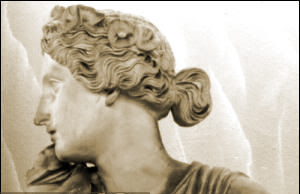 However, we have at least some spoils of the pre-Christian era. Although ninety-eight percent of classical art was destroyed by the early Christians, what survived speaks for itself as a tribute to the selection, balance, health and excellence of all human qualities.
However, we have at least some spoils of the pre-Christian era. Although ninety-eight percent of classical art was destroyed by the early Christians, what survived speaks for itself as a tribute to the selection, balance, health and excellence of all human qualities.
The Hindus. The Indo-European (i.e., Nordic) invaders arrived in India around 1400 BCE and immediately placed measures to favour high birth rates of the best elements of the population, identified with the Aryan invaders, and the decline of the worst, identified with the Negroid-Dravidic stratum.
The entire caste system was a great eugenics process in which the chandala (a term also used by Nietzsche to define the morals of Jews and Christians), the outcast, the untouchable, the sinful caste, the one considered inferior, was subjected to a horrendous lifestyle: using only the clothes of the dead bodies, drink only water from stagnant areas or animal tracks, not allow their women to be attended during childbirth, prohibition of washing, work as executioners, burials and latrine cleaners, and an unpleasant etcetera. Such impositions favoured that diseases were endemic among them; they fell like flies so that their numbers never constituted a danger for the best.
We are therefore faced with an example of negative eugenics: limiting the procreation of the worst. These measures are included in the Laws of Manu, the legendary Indo-Aryan legislator who laid the foundations for caste hierarchy. According to scientist Theodosius Dobzhansky, a renowned Ukrainian geneticist, ‘The caste system of India has been the greatest genetic experiment ever conducted by man’ (Genetic Diversity and Human Equality).
A woman always gives the world a child endowed with the same qualities as the one who has fathered him… A man of abject birth takes the natural evil of his father or his mother, or both at the same time, and can never hide its origin (Law of Manu, Book X).
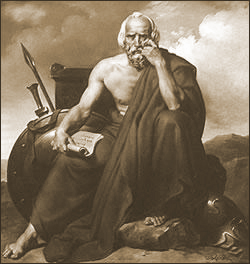 Lycurgus (8th century BCE), a regent of Sparta, travelled through Spain, Egypt and India accumulating wisdom and, later, carrying out a revolution in Sparta after which the polis would militarize and establish a social system based on eugenics. The measures of this program highlight the infanticides of deformed, ugly or stupid newborns. Broadly speaking, Lycurgus’s policy was based on training perfect human beings that gave birth to perfect human beings, and there was no place for genetic engenders in that plan. On the other hand, the crypteia, carried out by the Spartan authorities on the helots (the submissive plebs) can perfectly be considered a very brutal and primitive example of negative eugenics.
Lycurgus (8th century BCE), a regent of Sparta, travelled through Spain, Egypt and India accumulating wisdom and, later, carrying out a revolution in Sparta after which the polis would militarize and establish a social system based on eugenics. The measures of this program highlight the infanticides of deformed, ugly or stupid newborns. Broadly speaking, Lycurgus’s policy was based on training perfect human beings that gave birth to perfect human beings, and there was no place for genetic engenders in that plan. On the other hand, the crypteia, carried out by the Spartan authorities on the helots (the submissive plebs) can perfectly be considered a very brutal and primitive example of negative eugenics.
______ 卐 ______
Editor’s Note: Having helots as slaves was a fatal flaw for Spartan civilisation. The laws of Lycurgus did not foresee that eugenic customs would fatally relax after a catastrophic war (as would happen after the Peloponnesian War). A real solution would have been, as William Pierce saw in his study on Greece, to exterminate the non-Nordic Mediterraneans of Sparta and extend such policy to all Greece, and eventually to all Europe.
______ 卐 ______
As for the Spartan policies of positive eugenics—favouring the multiplication of the best—we see popular rituals such as the coronation of a male champion and a female champion in a sports competition, or a king and queen in a beauty pageant, or tax exemption to the citizens who left four children. The best were expected to marry the best. Single people over twenty-five years old were extremely frowned upon and punished with fines and humiliating acts.
If the parents are strong, the children will be strong (Fr. 7).
Heraclitus (535-484 BCE), a pre-Socratic Greek philosopher known for his aphorisms in the style of the Oracle of Delphi. He established that wisdom was much more than a mere accumulation of knowledge and intelligence, also valuing intuition, instinct and will. He said: ‘I ask all mortals to father well-born children of noble parents’.
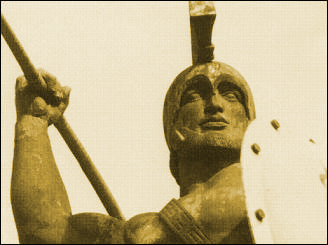 Leonidas (dies in 480 BCE), King of Sparta and supreme commander of the Greek troops in the Battle of Thermopylae. He fought in numerical inferiority against the Persians until the end, giving time for the evacuation of Greek cities, granting margin for an Athenian victory in the battle of Salamis and laying the foundations of the definitive Persian defeat in Plataea. Leonidas and his Spartans are an example of heroism, dedication to their people, a spirit of sacrifice, training and honour for all Western armies of all time.
Leonidas (dies in 480 BCE), King of Sparta and supreme commander of the Greek troops in the Battle of Thermopylae. He fought in numerical inferiority against the Persians until the end, giving time for the evacuation of Greek cities, granting margin for an Athenian victory in the battle of Salamis and laying the foundations of the definitive Persian defeat in Plataea. Leonidas and his Spartans are an example of heroism, dedication to their people, a spirit of sacrifice, training and honour for all Western armies of all time.
Marry the capable and give birth to the capable! (exhortation to the Spartan people before leaving for the Thermopylae according to Plutarch, On the Malice of Herodotus, 32).
Theognis of Megara (6th century BCE) was one of the great Greek poets. He has bequeathed us in his Theognidea a series of interesting reflections and advice to his disciple Cyrnus. Among other things, Theognis divides the population into ‘good’—the nobility, identified with the Hellenic invaders—and ‘bad’—the native plebeian population of Greece, which progressively accumulated money and rights:
In rams and asses and horses, Cyrnus, we seek
the thoroughbred, and a man is concerned therein
to get him offspring of good stock;
Yet in marriage a good man thinketh not twice of wedding
the bad daughter of a bad sire if the father give him many possessions;
Nor doth a woman disdain the bed of a bad man if he be wealthy,
but is fain rather to be rich than to be good.
For ’tis possessions they prize;
and a good man weddeth of bad stock and a bad man of good;
race is confounded of riches.
In like manner, son of Polypaus,
marvel thou not that the race of thy townsmen is made obscure;
’tis because bad things are mingled with good.
Even he that knoweth her to be such, weddeth a low-born woman for pelf,
albeit he be of good repute and she of ill;
for he is urged by strong Necessity, who giveth a man hardihood.
Critias (460-403 BCE), Athenian philosopher, speaker, teacher, poet and uncle of Plato. He is known for being part of the Spartan occupation government known as the thirty tyrants. We will appreciate the importance that this man attached not only to inheritance, but to sports training without which a human being will never be complete.
I begin with the birth of a man, demonstrating how he can be the best and strongest in the body if his father trains and endures hardness, and if his future mother is strong and also trains.
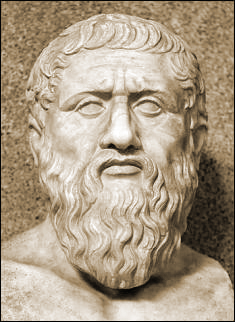 Plato (428-347 BCE), probably the most famous philosopher of all time, was inspired by Sparta to propose the measures of Greek regeneration in his work The Republic, plagued with values of both positive eugenics—promoting the best—as negative eugenics—limit the worst—, especially with regard to the caste of the ‘guardians’. Plato, like most Greek philosophers, was in favour of exposing defective children to the weather so that they died.
Plato (428-347 BCE), probably the most famous philosopher of all time, was inspired by Sparta to propose the measures of Greek regeneration in his work The Republic, plagued with values of both positive eugenics—promoting the best—as negative eugenics—limit the worst—, especially with regard to the caste of the ‘guardians’. Plato, like most Greek philosophers, was in favour of exposing defective children to the weather so that they died.
It is necessary, according to our principles, that the relationships of the most outstanding individuals of one sex or the other are very frequent, and those of the lower individuals very rare. In addition, it is necessary to raise the children of the first and not of the second, if you want the flock to not degenerate (The Republic).
Based on what was agreed, it is necessary for the best men to join the best women as often as possible, and on the contrary, the worst with the worst; and the offspring of the best and not the worst should be raised, so our flock will become excellent (Statesman, 459).
That even better children are born from elite men, and from useful men to the country, even more useful children (Statesman, 461).
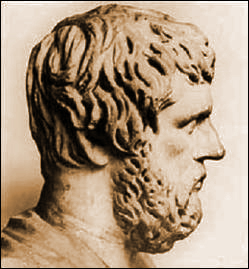 Xenophon (430-354), soldier, accomplished horseman during the Peloponnesian war, mercenary in the heart of Persia during the expedition of the ten thousand, philosopher, pro-Spartan and historian. Notorious anti-democrat who abhorred the Athenian government, he longed for fairer forms of government such as those he met in Persia and Sparta, where he sent his children to be educated. Together with Plutarch, Xenophon is the greatest source of information about Sparta, admiring the eugenic practices established by Lycurgus.
Xenophon (430-354), soldier, accomplished horseman during the Peloponnesian war, mercenary in the heart of Persia during the expedition of the ten thousand, philosopher, pro-Spartan and historian. Notorious anti-democrat who abhorred the Athenian government, he longed for fairer forms of government such as those he met in Persia and Sparta, where he sent his children to be educated. Together with Plutarch, Xenophon is the greatest source of information about Sparta, admiring the eugenic practices established by Lycurgus.
[Lycurgus] considered that the production of children was the noblest duty of free citizens (Constitution of the Lacedaemonians).
An old man had to introduce his wife to a young man in the prime of life whom he admired for his qualities, to have children with him (Constitution of the Lacedaemonians).
Isocrates (436-338 BCE), politician, philosopher and Greek teacher, was one of the famous ten Attic speakers and probably the most influential rhetorician of his time. He founded a public speaking school that became famous for its effectiveness and criticised the politics of many Greek cities, which instead of stimulating their birth rate inflated their numbers through the mass immigration of slaves, which he considered inferior to the Hellenic population. In this quotation it is verified to what extent Isocrates valued quality versus quantity:
It should not be said as happy that city which, from all extremes, randomly accumulates many citizens; but the one that best preserves the race of the settled since the beginning.
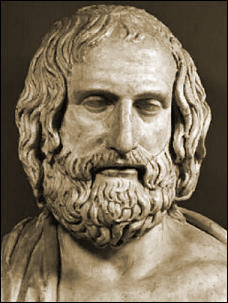 Euripides (480-406 BCE), playwright, a friend of Socrates and undoubtedly one of the greatest poets of all antiquity; his stain was an excessive machismo that led him to criticise the greater freedom enjoyed by women in Sparta. Disappointed and disgusted by the policies of a decadent Greece he retired to Macedonia, a place where Hellenic traditions were still pure, where he finally died.
Euripides (480-406 BCE), playwright, a friend of Socrates and undoubtedly one of the greatest poets of all antiquity; his stain was an excessive machismo that led him to criticise the greater freedom enjoyed by women in Sparta. Disappointed and disgusted by the policies of a decadent Greece he retired to Macedonia, a place where Hellenic traditions were still pure, where he finally died.
There is no more precious treasure for children than to be born of a noble and virtuous father and to marry among noble families. Curse to the reckless who, defeated by passion, joins the unworthy and leaves his children to dishonour in return for guilty pleasures (Heracleidae).
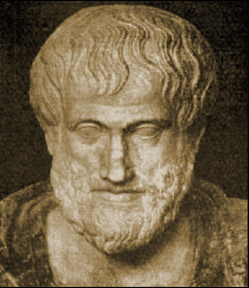 Aristotle (384-322 BCE), the famous philosopher who educated Alexander the Great and laid the western foundations of Hellenism, logic and sciences such as biology, taxonomy and zoology. Aristotle extends extensively in his work Politeia on the problems posed by eugenics, birth control, childhood feeding and education (books VII and VIII). He generally admired the ancient Spartan system, with some reservations—in my opinion unfounded as Sparta was not decadent—because the ephorate was tyrannical.
Aristotle (384-322 BCE), the famous philosopher who educated Alexander the Great and laid the western foundations of Hellenism, logic and sciences such as biology, taxonomy and zoology. Aristotle extends extensively in his work Politeia on the problems posed by eugenics, birth control, childhood feeding and education (books VII and VIII). He generally admired the ancient Spartan system, with some reservations—in my opinion unfounded as Sparta was not decadent—because the ephorate was tyrannical.
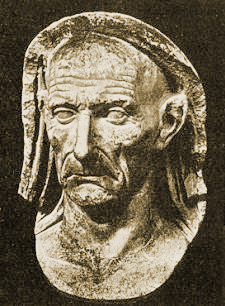 (Left, a Patrician bust.) The Patricians were the Roman leaders in the early days, when Rome was a Republic. These men were the patriarchs or clan chiefs of each of the thirty noble families descended from Italic invaders, and they ran all Roman institutions including the legions, the courts and the Senate. Sober, pure, ascetic and hard, their people held them in high regard as repositories of the highest wisdom and Roman posterity honoured them as gods.
(Left, a Patrician bust.) The Patricians were the Roman leaders in the early days, when Rome was a Republic. These men were the patriarchs or clan chiefs of each of the thirty noble families descended from Italic invaders, and they ran all Roman institutions including the legions, the courts and the Senate. Sober, pure, ascetic and hard, their people held them in high regard as repositories of the highest wisdom and Roman posterity honoured them as gods.
Their descendants formed the Patricians, the later Roman aristocracy, which gradually decayed throughout the Empire until almost completely dissolving, turning Rome into a disgusting decadent monster that deserved to be razed. After the Punic wars and Julius Caesar, Rome largely lost its Indo-European spirit.
In the IV of the XII tablets of the law, it was established that deformed children must be killed at birth. It was also left to the patriarchs of the patrician clans to decide which were the unfit children. They were usually drowned in the waters of the Tiber River, and other times abandoned, exposing them to wild animals and elements in a process called exposure. Apparently, the Romans did not fare so badly with this purifying tactic as we see in their conquering history.
Distorium vultum sequitur distortio morum, ‘A crooked face follows a crooked moral’—Roman proverb.
Meleager of Gadara (1st century BCE), Greek epigram compiler within the Hellenistic stage, who wrote: ‘If one mixes good with bad, a good progeny would not be born, but if both parents are good, they will beget noble children’ (Fr. 9).
Horace (65 BCE-8 CE) said: ‘The virtue of parents is a great dowry’ and ‘’The good and the brave descend from the good and the brave’ (Odes, IV, 4, 29).
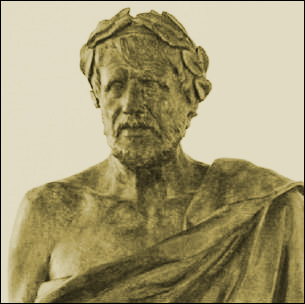 Seneca (4 BCE-65 CE), Roman philosopher of the Stoic school (the same school that Marcus Aurelius and Julian the Apostate belonged), of Hispanic-Celtic origin and teacher of Emperor Nero.
Seneca (4 BCE-65 CE), Roman philosopher of the Stoic school (the same school that Marcus Aurelius and Julian the Apostate belonged), of Hispanic-Celtic origin and teacher of Emperor Nero.
We exterminate hydrophobic dogs; we kill the indomitable bulls; we slaughter sick sheep for fear that they infest the flock; we suffocate the monstrous foetuses and even drown the children if they are weak and deformed. It is not passion, but reason, to separate healthy parts from those that can corrupt them (Of Anger, XV).
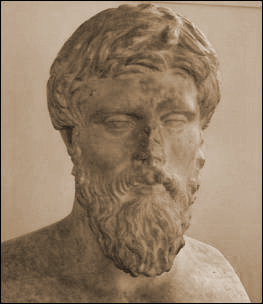 Plutarch (45-120 CE). Philosopher, mathematician, historian, speaker and priest of Apollo at the Oracle of Delphi. It is also one of the important sources of information about Sparta in his books Ancient Customs of the Lacedaemonians and Life of Lycurgus.
Plutarch (45-120 CE). Philosopher, mathematician, historian, speaker and priest of Apollo at the Oracle of Delphi. It is also one of the important sources of information about Sparta in his books Ancient Customs of the Lacedaemonians and Life of Lycurgus.
Leaving a being who is not healthy and strong from the beginning is not beneficial for the State or for the individual himself (Ancient Customs of the Lacedaemonians).
When a baby was born he was taken to a council of elders to be examined. If the baby was defective in some way the elders threw him down a ravine. Such a baby, in the opinion of the Spartans, should not be allowed to live (Life of Lycurgus).
This blog in a nutshell
‘That the beauty of the white Aryan women shall not perish from the earth’.
– The fourteen words
In the royal chapel of the cathedral of Granada this painting representing the Mass of St. Gregorio is preserved. Jesus shows the wound on his side and the attributes of his passion appear around him. It is a work of a 15th-century painter known as ‘Master of the Legend of St. Lucía’.
Apparently, the images of Christian art that I have been choosing as introductions to different posts have nothing to do with the content of the articles. For example, apparently this painting, in which the most famous Jew in history shows the wound on his side, inflicted by evil Romans, has nothing to do with the phobia that many white nationalists feel toward Nordicism (a Nordicism that, in times of the golden age of the American eugenicists and the Third Reich, was taken for granted).
But art is the Royal Road to understand the Zeitgeist of a stage of Western culture. In his 1969 series, Civilisation, Kenneth Clark showed the Greek head of Apollo as an example of the highest white culture. He then said that, with the arrival of Christianity, the human body virtually disappeared and the only thing that remained were degenerate homunculi in Irish pictorial art, especially as illustrated books.
A lot of white nationalists are still Christians who don’t want to hurt the feelings of the homunculi. If the beauty of the ancient Aryan man had not been demonised throughout Christendom, there would be no anti-Nordicists in the alt-right today. In other words, anti-Nordicism is the tail of the Era in which the Semite convinced the Aryan that His beauty was sinful. This is the last part of the tail of ‘There is neither Jew nor Greek, there is neither bond or free, male or female: for ye are all one in Christ Jesus’.
The superiority of National Socialism over the American movement today consists in that, like the Renaissance Italians, the Germans transvalued the Christian disvalue of a wounded Jew to the ancient value of Aryan beauty. That was very remarkable in the art, pamphlets and outdoor sports of the Third Reich. Replacing the Jew that shows us his wounds to make us feel guilty (the ancient version of the Holocaust), with the sculpture of a perfect Aryan, is part of the healing process to save the fair race.
The author of Counter-Currents insulted by anti-Nordicists (surely muds with an inferiority complex) wrote:
______ 卐 ______
Northern Europe vs. the Mediterranean
The oft-quoted statement of Aristotle, “Man is a political animal,” is actually a mistranslation. A truer rendering of his words would be, “Man is the kind of animal who lives in a polis.” That Greek word encompasses more than “city-state,” its usual translation. First of all, the English term “city-state” makes the city the dominant element and the surrounding countryside an afterthought, whereas in ancient Greece, most people lived in villages and farming communities. Even in the polis of Attica, which had the bustling city of Athens, the citizens it sent to fight at the Battle of Marathon were mostly farmers.
Such a community, moreover, must be relatively small. Athens was the exception: most Greek poleis had a total population of fewer than 50,000, with perhaps 5-10,000 citizens. In the Laws, Plato sets the ideal, with characteristic precision, at 5,040 citizens. Aristotle did not have Plato’s affinity for applying mathematical exactness to human affairs, but he did believe that a man should know his fellow citizens, if not personally then at least by reputation – else how could he properly judge if a man is fit to govern? He also thought it important that the citizens should be able to assemble in one place. Still, the polis must not be so small that it cannot meet its economic needs and defend itself properly.
Most important of all, by polis Greeks understood a whole nexus of ideas centered around a self-governing community that is bound not just by laws but by traditions and a common religion, language, and history. Absent these elements, the polis ceases to be. If the community is ruled not by itself but from a distant capital, or if it is a vast metropolis comprising a kaleidoscopic range of ethnicities, it is no longer a community in the true sense. What is more, its inhabitants cannot reach their moral, spiritual, or intellectual potential, because their nature has been cramped. Thus, life in the kind of community Aristotle describes is intimately bound up with Western man’s nature; without it, he becomes less human.
Using Aristotle’s criteria, we can see that medieval Iceland, for example, meets the definition of a polis. Overwhelmingly rural, it possessed no metropolis drawing off all financial and intellectual capital from the countryside. While spread over a large territory, the citizens of the Icelandic polis managed to assemble once a year at the Althing. That they knew of each other by reputation, or through a sort of medieval Six Degrees of Kevin Bacon, is evident from the impressive corpus of their sagas. In these, newcomers in the narrative always identify their kinship and lineage to an impressive degree, often crossing over between sagas, giving others the proper context in which to place them. The Icelanders governed themselves and were as fiercely independent as the Greeks who faced the Persian invasion. Above all, they were bound by a common history, language, and religion—this latter unity being such an important point that the official conversion to Christianity was decided at the Althing.
It does not take much imagination to see that the polis can also be a tribe: that is, kinship proves more important than geographic location. Aristotle was adamant, in fact, that whatever we call a collection of people who happen to live in the same place and interact merely for the purpose of making money off each other, we cannot call it a polis. Upon closer inspection, then, any of the Germanic tribes described by Tacitus meet Aristotle’s definition of a polis, and this would apply even later, during the period of the great Völkerwanderung that hastened Rome’s demise. But the polis had long since died out in Aristotle’s homeland, which had much to do with his most famous pupil.
Julian, 69
Julian Augustus
It is not easy to understand the Gauls. Their ways are strange to us, despite their many years as Roman subjects. I think they are the handsomest of the world’s people. Both men and women are tall and fair-skinned, often with blue eyes and blond hair. They are forever washing their clothes and bodies. One can go from one end of the province to the other without seeing a man or woman in soiled or ragged clothes. Laundry hangs drying beside every hovel, no matter how poor.
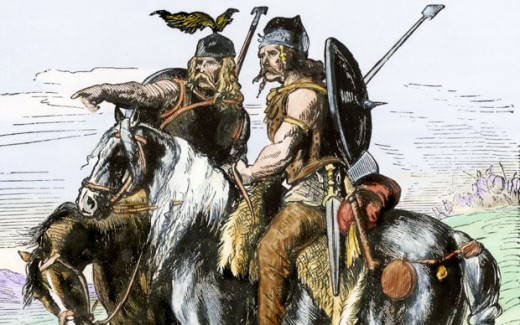 But despite their beauty, they are remarkably quarrelsome. Both men and women speak with curiously loud voices, braying their vowels and sounding hard their consonants. Whenever I gave justice, I used to be deafened by the rival lawyers and claimants, all bellowing like wounded bulls.
But despite their beauty, they are remarkably quarrelsome. Both men and women speak with curiously loud voices, braying their vowels and sounding hard their consonants. Whenever I gave justice, I used to be deafened by the rival lawyers and claimants, all bellowing like wounded bulls.
They boast that in a fight one Gaul is worth ten Italians. I’m afraid this is true.
They love battle. They have both the strength and heart for it. And their women love fighting, too. It is not at all unusual for a Gaul in the heat of battle to call to his wife to aid him. When she does, his strength increases tenfold. With my own eyes I have seen Gallic women attack the enemy, teeth gnashing, necks corded with veins, large white arms revolving like the cross-piece of a windmill, while their feet kick like shots discharged by catapult. They are formidable.
The Gallic men take pride in military service, unlike the Italians, who think nothing of cutting off their own thumbs to thwart the state’s recruiting officers. Gauls, however, delight in blood-letting, and they would be the greatest of all soldiers but for two reasons: they do not take well to military discipline, and they are drunks. At the most inconvenient moments a commander of Gallic troops is apt to find his soldiers mad with drink, under the excuse that such and such a day is holy and must be marked with a little wine or one of those powerful drinks they brew from grain and vegetables.
I shall not describe my campaigns in Gaul, for I have already published an account of them which flatterers declare is the equal of Julius Caesar’s Commentaries. I will say that I put more care into writing about the Gallic wars than I did in fighting them! But I shall record some of the things which I could not reveal at the time.
Wolfgang Willrich: Maria Weinmayr.
It is not only because the shape of the body of the Nordic man entails certain dimensions in height, width and length, or because it is often characterized by blond hair and blue eyes that we grant it some importance. It is not for that reason that we attribute a certain value to our Nordic inheritance.
Certainly the indications that the form of the body of the Nordic man gives us do not cease to constitute the very basis of our ideal of beauty. This has always been the case in Western history and it is enough to be convinced of this by taking a look at the panorama of the works of art that have been produced over the centuries by all the civilisations and ‘cultures’ that have been appearing on the European territory.
As far back as we go into the past, we always find sculptural figures and paintings that evoke an ideal of beauty, the characteristic forms of Nordic man. Even in certain Eastern civilisations we are in the presence of the same phenomenon. While the deities are represented with distinctly Nordic features, the figures of demons representing lower or dark forces have traits of other human races. In the Indies and even in the Far East there are often Buddhas whose features are distinctly Nordic.
That the Nordic racial body represents for us the ideal of beauty, seems natural to us. But all this only acquires its real and profound meaning because we find in it the expression and symbol of the Nordic soul. Without that Nordic soul, the Nordic body would be nothing more than an object of study for the natural sciences, as the physical form of any other human or animal race.
Just as the Nordic body has become precious and pleasant to us as perfect support and expression of the Nordic soul, so we experience repulsion by certain Jewish racial traits because they are the direct symbol and the true indication of a Jewish soul that for us is totally foreign.
Wise specialists of the matter tell us that a certain racial physical form and a certain racial soul necessarily go together and that they are, after all, more than the expression of one and the same thing. However, nothing seems more difficult for us than to demonstrate scientifically or by other means the accuracy of that homogeneity between the racial body and the racial soul.
‘Annals’, No. 2. Edition of the Belgian Schutzstaffel (SS) Brigade ‘Wallonie’, excerpted from ‘The SS Order’, OSS I.3.3.
______ 卐 ______
Editor’s note: The level of inverted values imposed by Christianity, even among white nationalists, is so evident that few reproduce on their sites images of Aryan beauty. Prior to Christianity, Aryan beauty appeared everywhere in sculptures and paintings. In the Middle Ages the Aryan figure lost its beauty and iconography was replaced with depictions of a Semitic Jesus, so that Aryans no longer experienced repulsion by certain Jewish racial traits.
Editor’s note:Left, a drawing by Wolfgang Willrich, ‘This is what the German soldier is fighting for’.
‘We cannot forget the predilection that the Hellenes felt for this colour [blond]: they could not conceive their noblest deities in another form’ wrote Joseph Arthur de Gobineau 165 years ago in a quote reproduced below. You can imagine what happened to the Aryan psyche after the Judeo-Christians destroyed the statues and temples of the Greco-Roman gods and replaced them with churches and iconography of a Semitic god (which is why we believe that Aryan liberation will only come after we burn down worldwide all Christian churches to the ground).
Here I translate and adapt for this site the first
______ 卐 ______
Nordicism was not born with European colonialism or with the rise of Nazi ideas in the interwar period. It is a trend that comes from classical antiquity, which is closely related to art and the human model to which art must aspire. Nordicism tries to answer the question of what is the source of the Indo-European tradition and which is the human race that laid the main foundations of Europe since prehistoric times.
However, the Nordic wave that is closest to us is the one that flourished under the Third Reich. To understand the ideas that underlie National Socialist Nordicism, the content of this piece, we will provide a selection of written fragments from:
• Adolf Hitler
• the SS doctrine
• Nazi ideologues such as Alfred Rosenberg
• Scholars who, without being Nazis, are considered avant-garde precursors of a mentality that culminated in Nazism, like Nietzsche. (H.S. Chamberlain has been omitted since he designates as ‘Teutonic’ what has finally been called ‘Nordic’.)
• Other authors that have nothing to do with National Socialism (they even ended up opposing it!) but that deal with the Nordic race, like Madison Grant.
• I also include images of National Socialist characters as well as propaganda and works of art from Nazi Germany, in which the Nordic type is represented as a reference, ideal and goal to pursue.
Arthur Schopenhauer (1788-1860) was a German philosopher who influenced, among others, Nietzsche and Hitler. During the First World War, Hitler always carried with him the book The World as Will and Representation. Schopenhauer wrote:
The highest civilisation and culture, apart from the ancient Hindus and Egyptians, are found exclusively among the white races; and even with many dark peoples, the ruling caste, or race, is fairer than the rest, and has, therefore, evidently immigrated, for example, the Brahmins, the Inca, and the rulers of the South Sea Islands. All this is due to the fact that necessity is the mother of invention, because those tribes that emigrated early to the north, and there gradually became white, had to develop all their intellectual powers, and invent and perfect all the arts in their struggle with need, want and misery, which in their many forms, were brought about by the climate. This they had to do in order to make up for the parsimony of nature, and out of it came their high civilisation. (Parerga and Paralipomena, 1851, Volume II, Section 92).
Arthur de Gobineau(1816-1882) was a French ambassador, historian and philosopher with a vast culture and a great intuition. His innovative and monumental work Essay on the Inequality of the Human Racesis well-known, but few venture to say that Gobineau was a ‘Nordicist’ in the sense that he identified the original Aryans with the ‘Nordic’ human type.
The colour of the Aryans was white and rosy: so were the Greeks and the oldest Persians; so were the primitive Hindus also. Among the colours of the hair and the beard dominated the blond, and we cannot forget the predilection that the Hellenes felt for this colour: they could not conceive their noblest deities in another form.
Essay on the Inequality of the Human Races, 1853 and 1855, Book Three, Chapter I.
In that very remote epoch, the civilising force did not reside in the South: it emanated from the North. It came from Thrace with Orpheus, with Mousaios, with Linos. The Greek warriors appeared tall, white and blond. Their eyes looked arrogantly at the sky, and this memory so dominated the thinking of successive generations, that when a darker polytheism invaded with the growing influx of Semitic immigrants all regions and all consciousnesses, and replaced it with their sanctuaries, for the Olympians the highest expression of beauty, of majestic power, was no other than the reproduction of the Aryan type: blue eyes, blond hair, white complexion, high stature and slender complexion.
Essay on the Inequality of the Human Races, 1853 and 1855, Third Book, Chapter III, on Ancient Greece.
What was, in the physical and moral realms, a Roman of the 3rd, 4th or 5th centuries? A man of medium height, of frail constitution and appearance, usually dark, running in his veins a little blood of all imaginable races; believing himself as the first man of the universe and, to prove it, he was insolent, creeping, ignorant, thief, depraved, ready to sell his sister, his daughter, his wife, his country and his sovereign; and endowed with an insurmountable fear of poverty, suffering, fatigue and death. Apart from that, he had no doubt that the Earth and its courtship of planets had been created for him only.
Faced with that despicable being, what was the barbarian? A man with blond hair, white and rosy complexion, broad on his back, tall in stature, vigorous as Alcides, reckless as Theseus, skillful, agile, feeling no fear of anything, let alone of death.
That Leviathan possessed above all, righteous or false ideas but reasoned, intelligent ideas that he struggled to be spread. Within his nationality, he had nourished the spirit of a severe and refined religion, of a shrewd politics, of a glorious history.
Able to meditate, he understood that the Roman civilisation was richer than his, and sought the reason for it. He was in no way that turbulent creature that we ordinarily imagine, but a very attentive adolescent with positive interests, who knew how to arrange himself to feel, see, compare, judge, prefer.
When the vain and miserable Roman opposed his tricks to the vital cunning of the barbarian, who decided the victory? The fist of the latter. Falling like a mass of iron on the skull of the poor grandson of Remus, that muscular fist showed him on which side the force was then. And in what way was the Roman humiliation then avenged? He cried, and he asked the centuries to come to take revenge for his oppressed civilisation. Poor little bugger! He resembled the contemporary of Virgil and Augustus as well as Shylock to King Solomon.
Essay on the Inequality of the Human Races, 1853 and 1855, Book Three, Chapter VII, On the Decline of Rome.

